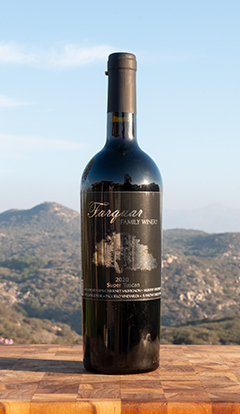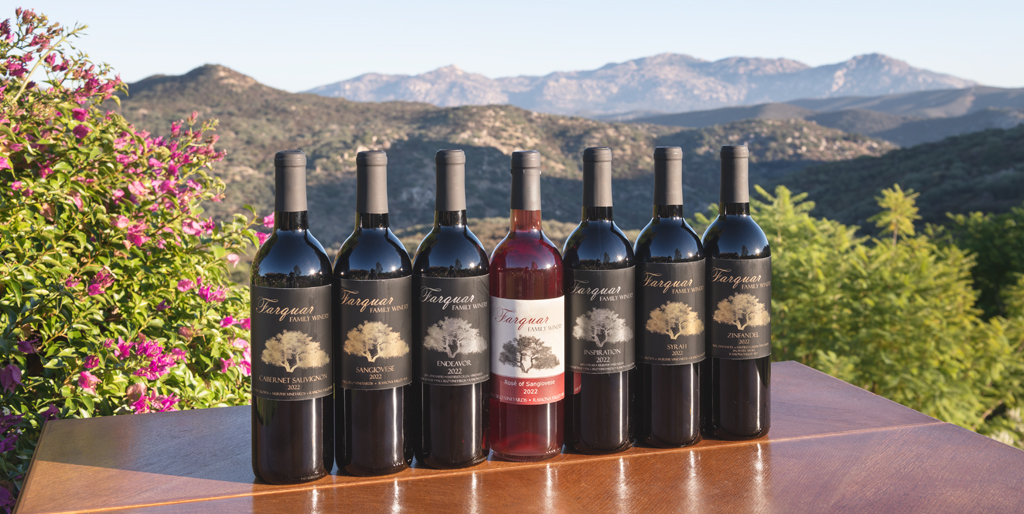OUR WINE SELECTION
If you are interested in trying any of our wines below, they can all be purchased at the Farquar Family Winery online shop!
2022 Rosé of Sangiovese
100% Sangiovese Rose made from grapes harvested from Paccielo Vineyards on 9/11/22. These grapes were crushed and immediately put into the bladder press and delivered to a 30-gallon flex tank for fermentation. I used the Rhone 4600 Yeast along with Go Ferm Protect to feed the yeast. I also fed the fermentation with Fermaid K twice along the way. Upon completion of fermentation the wine was racked off the gross lees. After tasting and testing the wine I felt it needed some color and flavor additions, so I added 2022 recently fermented Sangiovese from the same harvest. In addition, the wine was racked three more times for clarity and filtered using a one Micron cartridge followed by a 0.45 sterile filter.
Final lab analysis:
PH: 3.43
TA: 0.51
Alcohol: 14.5%
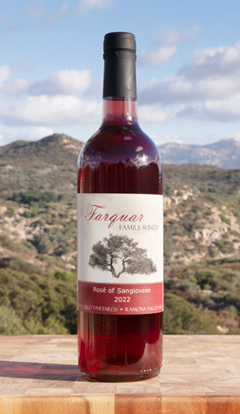
2022 Cabernet Sauvignon
100% Cabernet Sauvignon made from Estate Grown Grapes harvested on 9/15/22. These grapes were crushed and immediately placed into an open half ton micro bin. An addition of So2 was made to kill off the natural yeast immediately after crushing the grapes. The next day, I used D254 Yeast along with Go-Ferm Protect to feed the yeast. I also fed the fermentation with Fermaid O twice along the way. Upon completion of the 6-day fermentation the wine and skins were put through the bladder press. After 24 hours of resting, the wine was racked off the gross lees and transferred to a sanitized container for Malolactic Fermentation. At this stage, the wine was protected from oxygen. I added VP-41 Malo Bacteria along with ACTI ML to feed it. Along the way I fed it one more time and stirred the contents twice per week. Upon completion of the Malo Fermentation the wine was racked twice more then moved into a Second Fill American Oak Barrel from Missouri on November 28, 2022. Moved out of the barrel on April 23, 2023 into 30 gallon flex tank. Routinely gassed with Argon @ 21 days.
Final lab analysis:
PH: 3.41 on 9/24/23
TA: 0.60
Alcohol: 12.22%
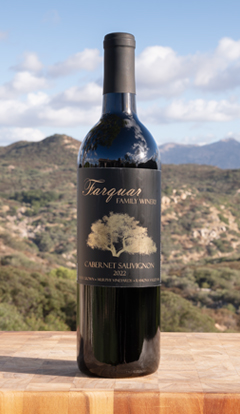
2022 Syrah
100% Estate Syrah made from Estate Grown Grapes harvested on 09/09/2022. An addition of So2 was made to kill off the natural yeast immediately after crushing the grapes. The next day, I used D254 Yeast along with Go Ferm Protect to feed the yeast in both tanks. I also fed the fermentation with Fermaid O twice along the way. Upon completion of the fermentation the wine and skins were put through the bladder press. After 24 hours of resting, the wine was racked off the gross lees and transferred into a new container for Malolactic Fermentation. From this stage onward, the wine was protected from oxygen. I added VP-41 Malo Bacteria along with ACTI ML to feed it. Along the way I fed it one more time and stirred the contents twice per week. Upon completion of the Malo Fermentation the individual wines were racked twice more. Based on Bench tests this wine was moved directly into a new French Oak Barrel from Nadalie on November 28, 2022. Moved out of the barrel on May 16, 2023, into a 30 gallon flex tank. Routinely gassed with argon @ 21 days.
Final lab analysis:
PH: 3.46
TA: 0.58
Alcohol: 13.48%
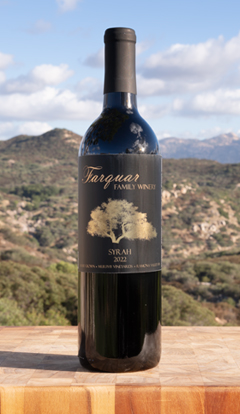
2022 Zinfandel
100% Zinfandel made from grapes harvested at Hatfield Creek Winery on 09/10/2022. These grapes were crushed and immediately placed into a half ton Macro Bin for fermentation. An addition of So2 was made to kill off the natural yeast immediately after crushing the grapes. The next day, after testing the BRIX (26.1), I added water then used D254 Yeast along with Go Ferm Protect to feed the yeast. I also fed the fermentation with Fermaid O twice along the way. Upon completion of the 7-day fermentation the wine and skins were put through the bladder press. After 24 hours of resting, the wine was racked off the gross lees and transferred into a new container for Malolactic Fermentation. From this stage onward, the wine was protected from oxygen. I added VP-41 Malo Bacteria along with ACTI ML to feed it. A I fed it one more time and stirred the contents twice per week. Upon completion of the Malo Fermentation the wine was racked twice more and moved into a third fill American Oak Barrel from Missouri on 11/28/22. Moved from barrel into a 50-gallon flex tank on May 30, 2023. Routinely gassed with argon @ 21 days. @ 2 gallons of Petite Syrah added from Edwards into tank.
Final lab analysis:
PH: 3.35 – 09/24/23
TA: 0.60
Alcohol: 14.59%
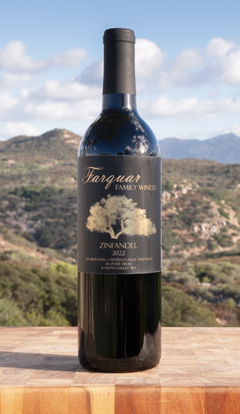
2022 Sangiovese
100% Sangiovese made from grapes harvested from Paccielo Vineyard on 9/11/22. These grapes were crushed and immediately placed into a half ton Macro Bin for fermentation. An addition of So2 was made to kill off the natural yeast immediately after crushing the grapes. The next day, I used D254 Yeast along with Go Ferm Protect to feed the yeast. I also fed the fermentation with Fermaid K twice along the way. Upon completion of the 7-day fermentation the wine and skins were put through the bladder press. After 24 hours of resting, the wine was racked off the gross lees and transferred to a new container. At this stage, the wine was protected from oxygen. the wine was racked off the gross lees and transferred into a new container for Malolactic Fermentation I added VP-41 Malo Bacteria along with ACTI ML to feed it. Along the way I fed it one more time and stirred the contents twice per week. Upon completion of the Malo Fermentation the individual wines were racked twice more. . The wine was then filtered using a three- and one-micron cartridge. After taste tests the wine was moved into a new French Oak Barrel from Nadalie on 11/28/2022. Moved from new French oak barrel on 5/16/23 into a 30 gallon flex tank. Routinely gassed with argon @ 21 days.
Final lab analysis:
PH: 3.51 – 09/24/23
TA: 0.58
Alcohol: 13.64%
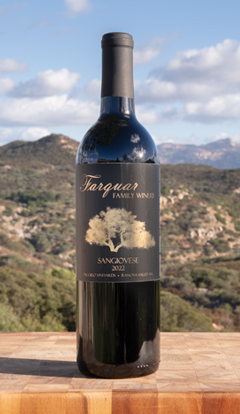
2022 Inspiration
A blend of 60% Estate Syrah and 40% Sangiovese from Paccielo Vineyards. These grapes were crushed and fermented separately. An addition of So2 was made to kill off the natural yeast immediately after crushing the grapes. The next day, I used D254 Yeast for all three varieties along with Go Ferm Protect to feed the yeast. I also fed the fermentation with Fermaid O twice along the way. Upon completion of the fermentation the wine and skins were put through the bladder press. After 24 hours of resting, the wine was racked off the gross lees. At this stage, the wine was protected from oxygen and transferred into a new container for Malolactic Fermentation I added VP-41 Malo Bacteria along with ACTI ML to feed it. Along the way I fed it one more time and stirred the contents twice per week. Upon completion of the Malo Fermentation the individual wines were racked twice more and blended before being moved into a second fill American Oak Barrel. Moved into a 30-gallon flex tank on April 23, 2023. Routinely gassed with argon @ 21 days.
Final lab analysis:
PH: 3.54
TA: 0.57
Alcohol: 13.53%
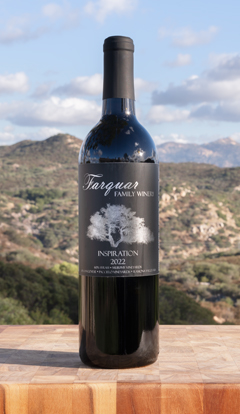
2022 Endeavor
A blend of 72% Sangiovese from Paccielo Vineyards and 28% Zinfandel from Hatfield Creek Winery. These grapes were crushed and fermented separately on different dates. An addition of So2 was made to kill off the natural yeast immediately after crushing the grapes. The next day, I used D254 Yeast for both varieties along with Go Ferm Protect to feed the yeast. I also fed the fermentation with Fermaid O twice along the way. Upon completion of the fermentation the wine and skins were put through the bladder press. After 24 hours of resting, the wine was racked off the gross lees. At this stage, the wines were protected from oxygen and transferred into separate containers for Malolactic Fermentation I added VP-41 Malo Bacteria along with ACTI ML to feed it. Along the way I fed it one more time and stirred the contents twice per week. Upon completion of the Malo Fermentation the individual wines were racked twice. After taste tests the wine was blended and moved into a second fill Hungarian Oak Barrel from Balazs. The wine was moved into a 30-gallon flex tank on April 23, 2023. Routinely gassed with argon @ 21 days.
Final lab analysis:
PH 3.48 – 09/24/23
TA: 0.59
Alcohol: 13.82%
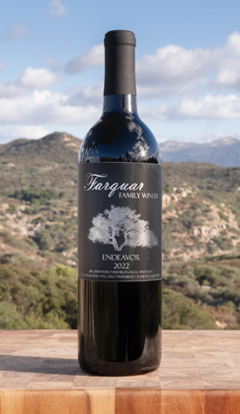
2021 Cabernet Sauvignon
100% Cabernet Sauvignon made from Estate Grown Grapes harvested on 9/25/21. These grapes were crushed and immediately placed into an open half ton Macro Bin. An addition of So2 was made to kill off the natural yeast immediately after crushing the grapes. The next day, I used D254 Yeast along with Go-Ferm Protect to feed the yeast. I also fed the fermentation with Fermaid O twice along the way. Upon completion of the 6-day fermentation the wine and skins were put through the bladder press. After 24 hours of resting, the wine was racked off the gross lees and transferred to a sanitized container for Malolactic Fermentation. At this stage, the wine was protected from oxygen. I added VP-41 Malo Bacteria along with ACTI ML to feed it. Along the way I fed it one more time and stirred the contents twice per week. Upon completion of the Malo Fermentation the wine was racked twice more then moved into a second fill American Oak Barrel from Missouri on November 24, 2021.
Final lab analysis:
PH: 3.45
TA: 59
Alcohol: 13.31% Baker Grape and Wine Lab
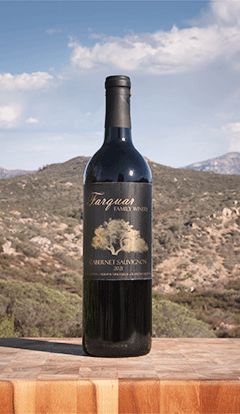
2021 Syrah
100% Estate Syrah harvested on 9/25/2021. An addition of So2 was made to kill off the natural yeast immediately after crushing the grapes. The next day, I used D254 Yeast along with Go-Ferm Protect to feed the yeast in both tanks. I also fed the fermentation with Fermaid O twice along the way. Upon completion of the fermentation the wine and skins were put through the bladder press. After 24 hours of resting, the wine was racked off the gross lees and transferred into a new container for Malolactic Fermentation. From this stage onward, the wine was protected from oxygen. I added VP-41 Malo Bacteria along with ACTI ML to feed it. Along the way I fed it one more time and stirred the contents twice per week. Upon completion of the Malo Fermentation the individual wines were racked twice more. Based on Bench tests this blend was developed and mixed directly into a third fill American Oak Barrel from Missouri on November 25, 2021. I added 15 gallons of Syrah from Edwards Cellars – Clone 6, and then filtered with a one micron cartridge followed by a .45 sterile filter.
Final lab analysis:
PH: 3.6
TA: 59
Alcohol: 13.94% Baker Grape and Wine Lab
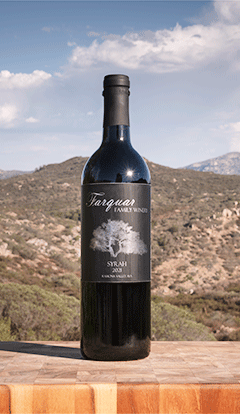
2021 Zinfandel
80% Zinfandel made from grapes harvested at Hatfield Creek Winery on 9/19/2021. These grapes were crushed and immediately placed into a half ton Macro Bin for fermentation. An addition of So2 was made to kill off the natural yeast immediately after crushing the grapes. The next day, after testing the BRIX (25.1) I used D254 Yeast along with Go-Ferm Protect to feed the yeast. I also fed the fermentation with Fermaid O twice along the way. Upon completion of the 7-day fermentation the wine and skins were put through the bladder press. After 24 hours of resting, the wine was racked off the gross lees and transferred into a new container for Malolactic Fermentation. From this stage onward, the wine was protected from oxygen. I added VP-41 Malo Bacteria along with ACTI ML to feed it. I fed it one more time and stirred the contents twice per week. Upon completion of the Malo Fermentation the wine was racked twice more and moved into a second fill American Oak Barrel from Missouri on 11/24/21. In order to add more complexity, Petite Syrah from Edwards Vineyards and Cellars was added.
Final lab analysis:
PH: 3.26
TA: 63
Alcohol: 14.82% Baker Grape and Wine Lab

2021 Sangiovese
100% Sangiovese made from grapes harvested from Paccielo Vineyards on 9/18/21. These grapes were crushed and immediately placed into a half ton Macro Bin for fermentation. An addition of So2 was made to kill off the natural yeast immediately after crushing the grapes. The next day, I used D254 Yeast along with Go-Ferm Protect to feed the yeast. I also fed the fermentation with Fermaid O twice along the way. Upon completion of the 7-day fermentation the wine and skins were put through the bladder press. After 24 hours of resting, the wine was racked off the gross lees and transferred to a new container. At this stage, the wine was protected from oxygen. The wine was racked off the gross lees and transferred into a new container for Malolactic Fermentation. I added VP-41 Malo Bacteria along with ACTI ML to feed it. Along the way I fed it one more time and stirred the contents twice per week. Upon completion of the Malo Fermentation the individual wines were racked twice more. The wine was then filtered using a three and one micron cartridge. After taste tests the wine was moved into a new Hungarian Oak Barrel from Balazs.
Final lab analysis:
PH: 3.43
TA: 52
Alcohol: 14.42% Baker Grape and Wine Lab

2021 Super Tuscan
A blend of 46% Sangiovese from Paccielo Vineyards, 39% Estate Syrah and 15% Estate Cabernet. These grapes were crushed and fermented separately. An addition of So2 was made to kill off the natural yeast immediately after crushing the grapes. The next day, I used D254 Yeast for all three varieties along with Go-Ferm Protect to feed the yeast. I also fed the fermentation with Fermaid O twice along the way. Upon completion of the fermentation the wine and skins were put through the bladder press. After 24 hours of resting, the wine was racked off the gross lees. At this stage, the wine was protected from oxygen and transferred into a new container for Malolactic Fermentation. I added VP-41 Malo Bacteria along with ACTI ML to feed it. Along the way I fed it one more time and stirred the contents twice per week. Upon completion of the Malo Fermentation the individual wines were racked twice more and blended before being moved into a third fill French Oak Barrel.
Final lab analysis:
PH: 3.51
TA: 54
Alcohol: 14.32% Baker Grape and Wine Lab
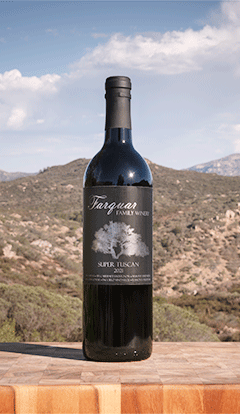
2021 Endeavor
A blend of 65% Sangiovese from Paccielo Vineyards and 35% Zinfandel from Hatfield Creek Winery. These grapes were crushed and fermented separately on different dates. An addition of So2 was made to kill off the natural yeast immediately after crushing the grapes. The next day, I used D254 Yeast for both varieties along with Go-Ferm Protect to feed the yeast. I also fed the fermentation with Fermaid O twice along the way. Upon completion of the fermentation the wine and skins were put through the bladder press. After 24 hours of resting, the wine was racked off the gross lees. At this stage, the wines were protected from oxygen and transferred into separate containers for Malolactic Fermentation. I added VP-41 Malo Bacteria along with ACTI ML to feed it. Along the way I fed it one more time and stirred the contents twice per week. Upon completion of the Malo Fermentation the individual wines were racked twice more. After taste tests the wine was blended and moved into a second fill Hungarian Oak Barrel from Balazs.
Final lab analysis:
PH: 3.38
TA: 60
Alcohol: 14.73% Baker Grape and Wine Lab
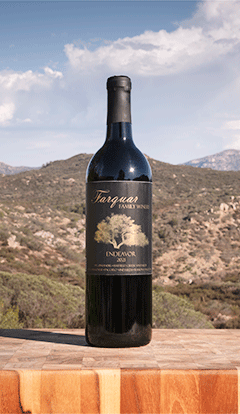
2020 Dauntless
70% Cabernet Sauvignon from Emerald Creek Winery and 30% from Estate grown Syrah. Grapes were crushed and fermented separately. An addition of So2, to kill off the natural yeast, was made immediately after crushing the grapes. The next day, I used D254 Yeast, along with Go Ferm Protect, to feed the yeast in both tanks. I also fed the fermentation with Fermaid O twice. Upon completion of the fermentation, the wine and skins were put through the bladder press. After 24 hours of resting, the wine was racked off the gross lees and transferred into a new container for Malolactic Fermentation. From this stage onward, the wine was protected from oxygen. I added VP-41 Malo Bacteria along with ACTI ML. Upon completion of the Malo Fermentation, individual wines were racked twice more. Based on bench tests, this blend was developed and mixed directly into a second fill American Oak Barrel, from Missouri, on 11/15/20. After maturing in the barrel for 8 ½ months, wine was moved into a holding tank to rest and await final labs. The wine was bottled on 9/03/2021. Release date will be determined after additional bottle aging.
Final lab analysis:
PH: 3.51
TA: 0.62
Alcohol: 13.53% - Baker Grape and Wine Lab
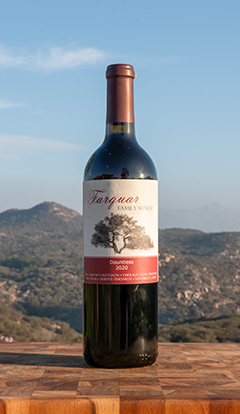
2020 Sangiovese
Grapes were harvested at Paccielo Vineyard on 9/27/20, crushed and immediately placed into a half ton Macro Bin for fermentation. So2 was added to kill off the natural yeast after crushing the grapes. The next day, I used D254 Yeast, along with Go Ferm Protect, to feed the yeast. Fermentation was fed with Fermaid O twice along the way. Upon completion of the 7- day fermentation process, the wine and skins were put through the bladder press. After 24 hours of resting, the wine was racked off of the gross lees and transferred to a new container. At this stage, the wine was protected from oxygen, then racked again off the gross lees and transferred into a new container for Malolactic Fermentation. I added VP-41 Malo Bacteria along with ACTI ML. Upon completion of the Malo Fermentation the individual wines were racked two more times. The wine was then filtered using a three and one-micron cartridge. After taste tests, the wine was moved into a new Hungarian Oak Barrel, from Balazs, to mature for 8 ½ months. After final labs, the wine was bottled on 9/17/2021 and released on 01/11/2022.
Final lab analysis:
PH: 3.55
TA: 0.63
Alcohol: 13.61%
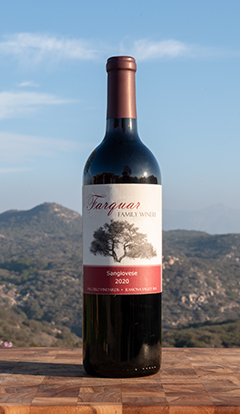
2020 Super Tuscan
A blend of 40% Sangiovese from Paccielo Vineyards, 40% Estate Syrah, and 20% Emerald Creek Cabernet. Grapes were crushed and fermented separately. An addition of So2 was made to kill off the natural yeast, immediately after crushing the grapes. D254 Yeast was used for all three varieties, along with Go Ferm Protect, 24 hours after harvest. Fermaid O was used twice during fermentation. Upon completion of the fermentation, the wine and skins were put through the bladder press. After 24 hours of resting, the wine was racked off the gross lees. At this stage, the wine was protected from oxygen and transferred into a new container for Malolactic Fermentation. I added VP-41 Malo Bacteria along with ACTI ML to feed it. Upon completion of the Malo Fermentation, the individual wines were racked two more times. After taste tests, wines were blended and moved into a third fill French Oak Recoop Barrel for 9 months. After being removed to rest and final labs, the wine was bottled on 9/17/2021 and released on 01/11/2022.
Final lab analysis:
PH: 3.44
TA: 0.63
Alcohol: 13.79%
